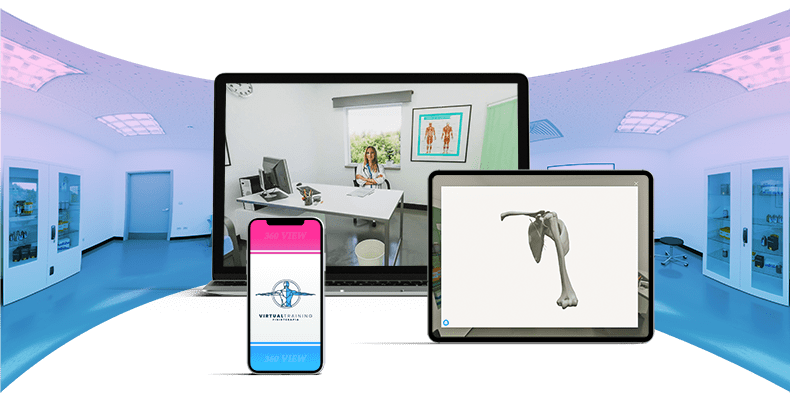
The digital landscape is undergoing a transformative shift as Augmented Reality (AR), Virtual Reality (VR), and Artificial Intelligence (AI) converge. Individually, these technologies have already begun to redefine our interactions with the digital world. However, their intersection is set to create unprecedented experiences that will revolutionize various business sectors, from entertainment and education to healthcare and beyond.
Augmented Reality: Blending Digital and Physical Worlds
AR overlays digital information onto the real world, enhancing our perception of reality. The AR technology has applications in various fields:
- Retail: AR allows users to visualize, try and personalize products in their home environment before making a purchase, thus increasing purchase intention.
- Education: Interactive AR models can bring abstract concepts to life, making learning more engaging, memorable and effective.
- Healthcare: AR can assist surgeons with real-time data during procedures, improving accuracy and outcomes.
- Industry: AR can support maintenance and repair of industrial equipment, by providing real-time, step-by-step guidance to technicians so that procedures can be performed faster and with fewer errors.
Virtual Reality: Immersive Digital Environments
VR, on the other hand, immerses users in a completely digital environment, offering an experience detached from the physical world. Some examples of VR applications are:
- Entertainment: VR provides a level of immersion in gaming and storytelling that was previously unimaginable. Also, both adults and kids can use VR to experience historical events as if they were there. And this can greatly impact what people take away from museums, heritage sites, art galleries and many related areas.
- Training: VR simulations offer risk-free environments for training in fields such as aviation, military, and emergency response. And can be used in Corporate training to employees, too.
- Therapy: VR is used in psychological treatments to help patients manage phobias, depression, PTSD (Post Traumatic Stress Disorder) or diseases like Parkinson.
Artificial Intelligence: The Brain Behind the Tech
AI is the powerhouse driving the smart functionalities within AR and VR experiences. With capabilities such as machine learning, natural language processing, and computer vision, AI enhances these technologies by:
- Personalization: AI algorithms analyze user behaviour to tailor experiences to individual preferences.
- Interactivity: AI enables more natural interactions within AR and VR environments through voice commands, gestures, and even facial expressions.
- Data Analysis: AI processes huge amounts of data in real-time, providing insights and enhancing decision-making processes.
Convergence of AR, VR and AI: Creating New Realities

The convergence of AR, VR, and AI is creating new paradigms of interaction and experience. Here are some examples:
- Enhanced Realism and Interaction
AI-driven AR and VR applications offer more realistic and interactive experiences. In gaming, for instance, AI can create intelligent NPCs (Non-Player Characters) that react dynamically to the player’s actions, providing a more immersive and engaging experience. The game “Half-Life: Alyx” uses AI to provide NPCs with realistic behaviours and interactions, enhancing the immersive experience.
- Smart Assistance and Navigation
In navigation, AR combined with AI can provide real-time, context-aware guidance. For example, tourists can use AR glasses to receive historical information about landmarks as they explore a city, with AI customizing the experience based on their interests. Google Maps’ AR walking directions use the phone’s camera to overlay arrows and directions onto the real world, with AI customizing the experience based on the user’s location and preferences.
- Innovative Training and Education
In education, AI-enhanced VR can create adaptive learning environments. Imagine a history class where students can virtually visit ancient civilizations, with AI adjusting the experience based on each student’s learning pace and style.
- Advanced Healthcare Solutions
In healthcare, AR, VR, and AI are merging to offer advanced diagnostic and treatment options. Surgeons can practice complex procedures in VR simulations before operating on patients. AI can analyze medical data in real-time, providing augmented insights during surgery. AI analyzes the performance and offers feedback, improving skills and reducing the risk of errors in actual surgeries.
- Revolutionizing Remote Work
The integration of these technologies is also set to transform remote work. Virtual offices powered by VR can simulate the experience of working in a physical office, fostering collaboration. AI can manage schedules, facilitate meetings, and even provide language translation in real-time, breaking down geographical barriers.
Conclusion
The convergence of AR, VR, and AI is not just an evolution but a revolution. It is creating new dimensions of experience and interaction. As these technologies continue to advance and integrate, we can expect to see even more innovative applications that will reshape our world.
Stay tuned to our blog for more insights into the fascinating world of immersive technologies and how they are transforming our lives.
AR MARKET uses AR and VR Immersive Technologies powered by AI to develop solutions for multiple business verticals.
CONTACT US IF YOU WANT TO DEVELOP YOUR INNOVATIVE PROJECT




